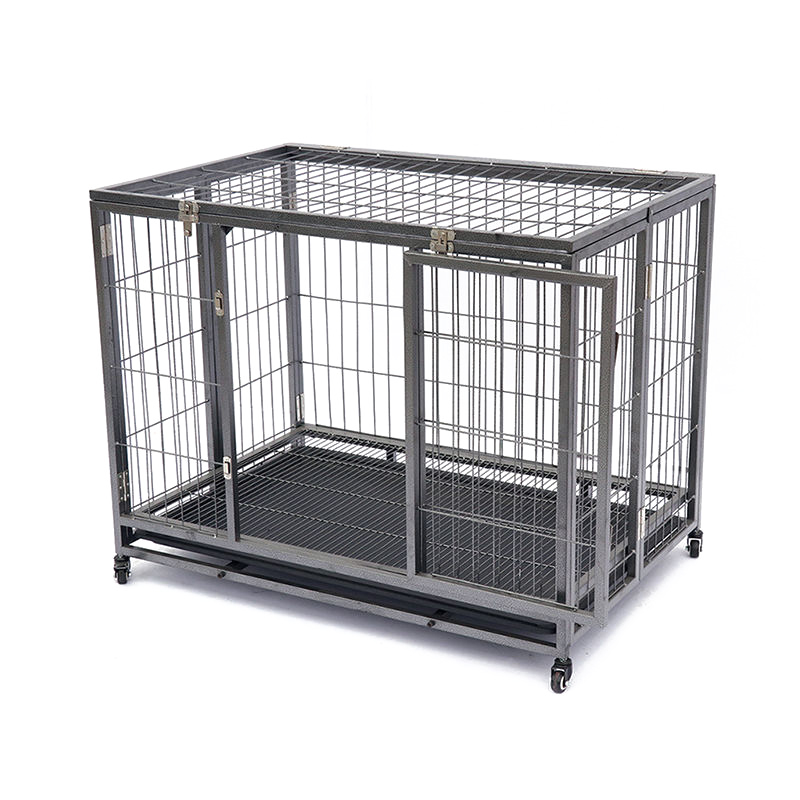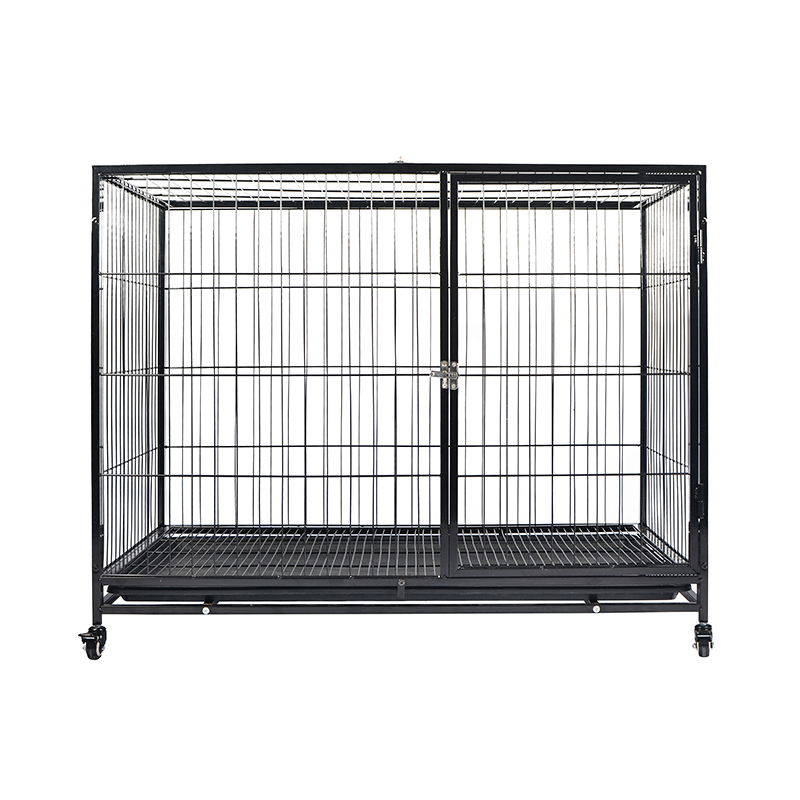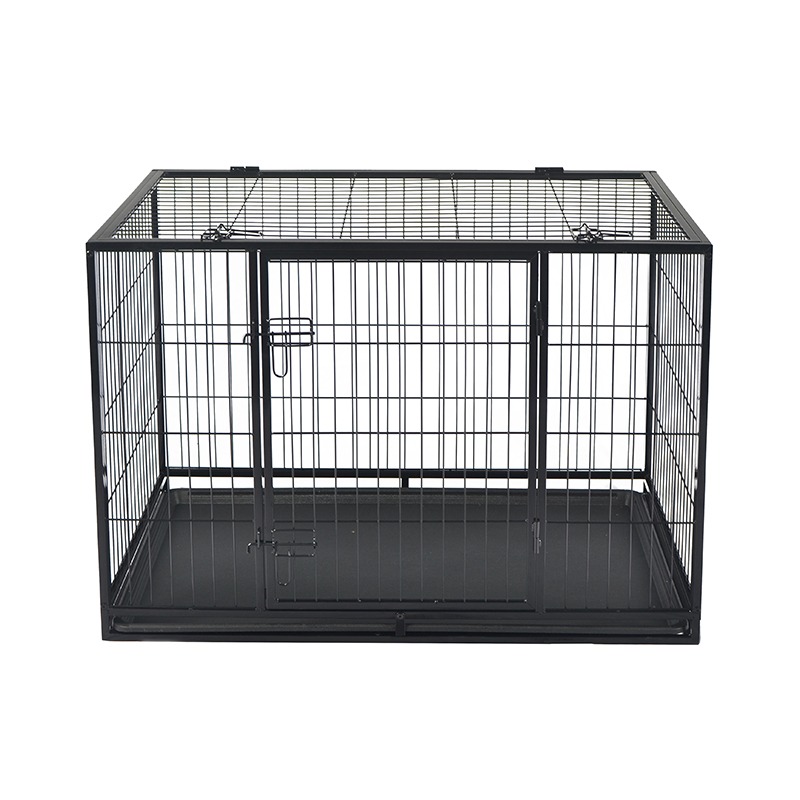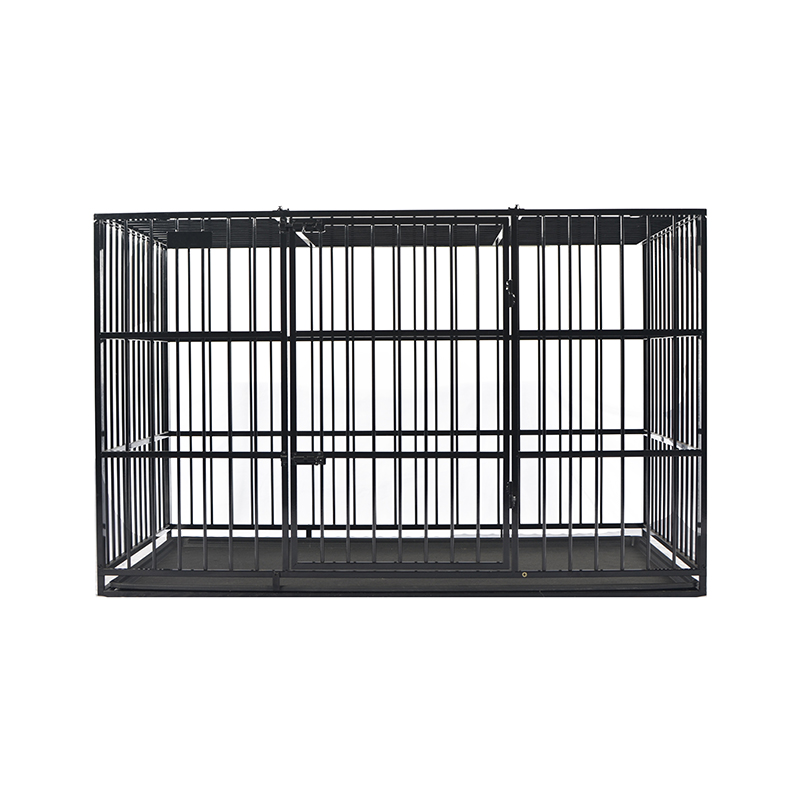Will the metal cage rust?
The Metal Dog Cage is made of low‑carbon steels Q195 and Q235 that are either powder‑coated or hot‑galvanized, giving it a certain level of corrosion resistance. However, in humid, salty, or constantly wet environments—especially when exposed to pet waste—rust can still develop.
Anti‑rust measures
Surface treatment: Keep the paint or galvanised layer intact; avoid scratches that expose bare metal.
Regular inspection: If light rust spots appear, remove them with fine sandpaper or a wire brush, then apply anti‑rust paint or paste.
Keep dry: Wipe the cage dry after use to prevent prolonged moisture.
Use rust inhibitors: In damp seasons, spray a rust‑preventive agent on the surface to slow down corrosion.
With proper maintenance, the lifespan of a metal dog cage can be greatly extended and the risk of rust can be effectively controlled.
How to correctly install hinges and door locks?
1.Hinge installation steps
Measure and mark: Based on the door frame dimensions, mark the centre positions for the hinges on both sides of the door, ensuring the hinge axes are vertically aligned.
Pre‑drill holes: Use a small drill bit matching the screw diameter; the hole depth should be slightly deeper than the screw length to avoid damaging the threads.
Secure the hinges: Place the hinge base on the marked spots and fasten it with screws. Adjust the screws if necessary to fine‑tune the door’s clearance and height.
Check movement: Open and close the door to verify smooth operation; if there is any binding, loosen the screws slightly or re‑align the hinges.
2.Door lock installation tips
Choose the right lock: Metal cages commonly use reinforced latch‑type or double‑door lock mechanisms; the lock body must match the door thickness.
Align the lock hole: Drill a lock hole in the door panel that matches the lock’s latch diameter (or slightly larger) so the latch can slide in freely.
Fasten with anti‑rust screws: Secure the lock body to the frame using corrosion‑resistant screws; avoid overtightening, which could affect latch elasticity.
Function test: Operate the lock several times to ensure the latch fully engages the lock seat, preventing the dog from prying it open.
Whether you want to become our partner or need our professional guidance or support in product selections and problem solutions, our experts are always ready to help within 12 hours globally.
 CONTACT US
CONTACT US


 EN
EN
 English
English 中文简体
中文简体













